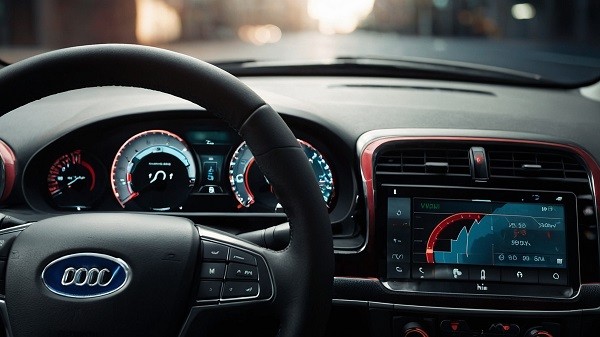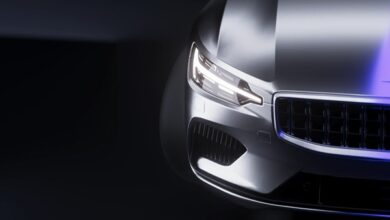Automotive HMI Design Challenges and Solutions

The automotive industry is experiencing a revolution in Human-Machine Interface (HMI) design. As vehicles become increasingly connected and autonomous, the importance of creating intuitive, safe, and engaging interfaces for drivers and passengers has never been greater. This article explores the key challenges faced by automotive HMI designers and the innovative solutions being implemented to address them.
The Evolving Landscape of Automotive HMI
Automotive HMI has come a long way from simple knobs and dials. Today’s vehicles feature sophisticated touchscreens, voice controls, haptic feedback systems, and even gesture recognition. This evolution is driven by the increasing complexity of vehicle systems, the demand for connectivity, and the gradual shift towards autonomous driving. As a result, HMI designers must balance functionality, safety, and user experience in ways never before imagined.
Safety First: Designing for Driver Distraction
One of the primary challenges in automotive HMI design is minimizing driver distraction. With the proliferation of in-vehicle infotainment systems, there’s a constant tension between providing rich functionality and ensuring that the driver’s attention remains focused on the road. Solutions to this challenge include the use of voice commands, heads-up displays (HUDs), and carefully designed touch interfaces that minimize the need for visual attention.
Advanced HMI design tools are proving invaluable in this area, allowing designers to create and test interfaces that prioritize safety. These tools enable rapid prototyping and iteration, making it possible to refine designs based on driver behavior and attention patterns.
Consistency Across Multiple Displays
Modern vehicles often feature multiple displays, from the main infotainment screen to digital instrument clusters and rear-seat entertainment systems. Maintaining consistency across these various interfaces while optimizing each for its specific function is a significant challenge. Designers are addressing this by developing cohesive design languages and user interface (UI) frameworks that can be adapted across different screen sizes and contexts.
Integrating Physical and Digital Controls
While touchscreens have become ubiquitous, physical controls still play a crucial role in automotive HMI. The challenge lies in creating a seamless integration between physical and digital interfaces. Solutions include the use of contextual physical controls that change function based on the current screen, and haptic feedback systems that provide a tactile response to touch interactions, enhancing the sense of control without requiring visual confirmation.
Personalization and Adaptability
As vehicles become more connected, there’s an increasing expectation for personalized experiences. HMI designers are tasked with creating interfaces that can adapt to individual user preferences, driving habits, and even emotional states. This involves implementing machine learning algorithms that can learn from user behavior and adjust the interface accordingly, as well as developing systems that can integrate with personal devices and cloud services.
Designing for Autonomous Vehicles
The gradual shift towards autonomous driving presents entirely new challenges for HMI design. As vehicles take on more driving responsibilities, the interface must evolve to keep passengers informed and in control when necessary, while also providing entertainment and productivity options during autonomous operation. Solutions in this space include adaptive interfaces that change based on the level of autonomy, and augmented reality displays that provide enhanced awareness of the vehicle’s perception and decision-making processes.
Cultural and Regional Considerations
Automotive manufacturers operate on a global scale, necessitating HMI designs that can be adapted for different cultural and regional preferences. This goes beyond mere language translation, extending to color schemes, iconography, and even the fundamental layout of information. Designers are addressing this challenge by creating flexible UI frameworks that can be easily localized without losing their core functionality or brand identity.
Performance and Responsiveness
In the automotive context, interface lag or unresponsiveness is not just an annoyance – it can be a safety issue. HMI designers must ensure that interfaces are highly responsive, even when dealing with complex features like 3D maps or multi-camera systems. This often requires close collaboration with hardware teams to optimize performance and implement efficient rendering techniques.
Tools like SquareLine Studio play a crucial role here, offering optimized rendering engines and performance analysis tools that help designers create smooth, responsive interfaces even on resource-constrained automotive hardware.
Testing and Validation
The complexity of modern automotive HMI systems necessitates rigorous testing and validation processes. This includes not only functional testing but also extensive user testing under various driving conditions. Designers are leveraging advanced simulation tools and virtual reality environments to test interfaces early in the development process, allowing for rapid iteration and refinement.
Future-Proofing Designs
With the rapid pace of technological advancement in the automotive industry, HMI designers must create interfaces that can accommodate future features and technologies. This involves designing flexible, modular systems that can be updated over time, potentially through over-the-air software updates. It also means considering emerging technologies like augmented reality, advanced driver assistance systems (ADAS), and new display technologies in current designs.
The Role of Design Tools and Frameworks
The complexity of automotive HMI design has led to the development of specialized tools and frameworks. Platforms like SquareLine Studio offer features tailored to the unique challenges of automotive interfaces, including support for multiple display types, integration with automotive-grade hardware, and tools for optimizing performance and safety. These platforms are enabling designers to create more sophisticated, safer, and more user-friendly interfaces while streamlining the development process.
Conclusion
Automotive HMI design stands at the intersection of technology, safety, and user experience. As vehicles continue to evolve, becoming more connected and autonomous, the challenges faced by HMI designers will only grow more complex. However, with innovative solutions, advanced design tools, and a user-centered approach, the automotive industry is well-positioned to create interfaces that not only meet the functional needs of modern vehicles but also enhance the overall driving experience. The future of automotive HMI promises to be both exciting and transformative, shaping the way we interact with our vehicles for years to come.


